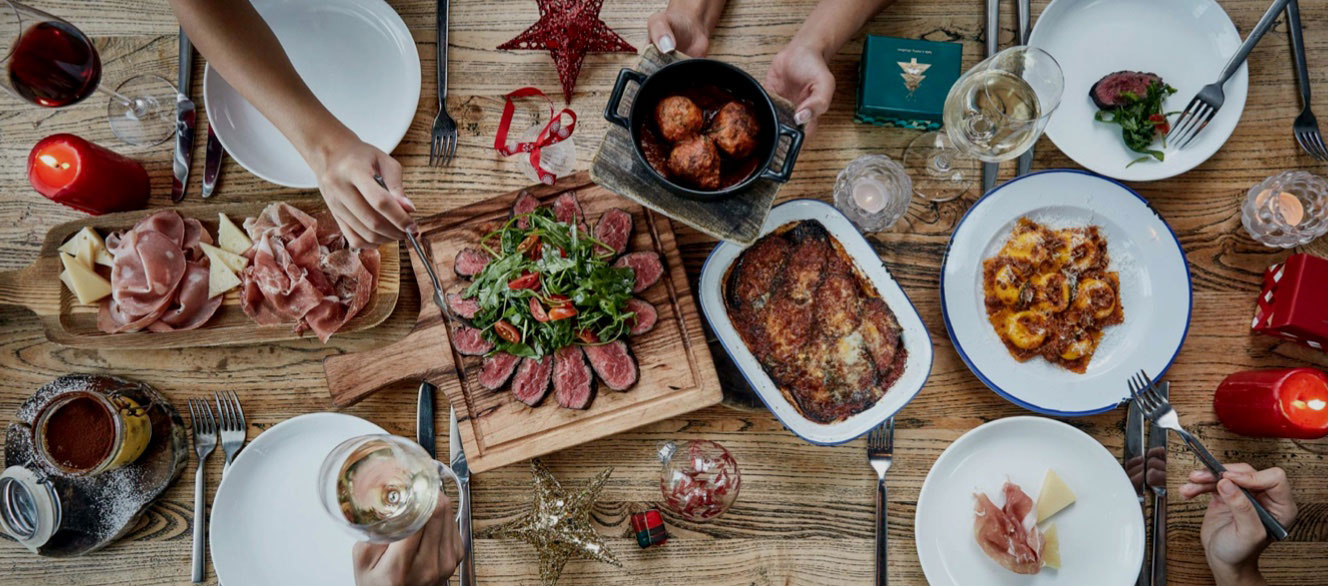
Bread & Butter #001
22th October 2019
Pirata Group on growth challenges and what have we learnt: To grow or not to grow?
Over the past few years, as many of you may have noticed, we have been growing rapidly. As such, we have been experiencing growing pains like any other company, what have we learned?
What is the reason Pirata Group decided to grow from one location to multiple locations?
From the very beginning when we founded Pirata back in 2014, the intention was never to grow any further than one restaurant. That’s all the dream that we had, to have a good restaurant that our friends and family would love to visit. We could only see as far as one service at a time. A year after, we were presented with the opportunity to open at a second space within the same building of Pirata on the ground floor level. We believe that out of courage and optimism, we decided to secure our second location for the restaurant that is now known as The Optimist. This time, the project was not concept-driven but location. The location made the concept for us on this occasion.
This is a recurring question we find whenever people ask: What comes first? Location or the concept. The answer is that it always changes. Sometimes we have location but no concept while other times, it is the other way around.
At this stage, with two restaurants and no back office support like Human Resources or Finance, we were working long hours until late at night in different rooms of the restaurants. We thought we had no choice but to either grow or die. Although the restaurants were doing well, it was physically impossible to continue the working hours without a back office, but we were too small to be able to afford this growth. We decided to consolidate and raise capital to go to the next step.
Pici and Tokyolima grew almost out of necessity at the time, and we were uncertain whether we could make it happen or not. The Opening of our third and fourth concepts allowed us to hire a small team to support the operations. We started with the Human Resources team, followed by Finance, Events team and finally Guest Relations. We were a team of just five or six of us in the office.
What has been the most difficult part of growing?
The most difficult part of growing has been that everything breaks as you grow, and we mean everything. Systems that worked when you were just a bunch don’t work anymore and you are suddenly confronted with fixing problems you didn’t know existed. At some point, every department breaks and you need to keep on fixing as you are in motion with a full house day in and day out. The show, regardless of the difficulties you are facing, starts at 12PM and 6PM every day and no matter what, you must be ready. You find yourself questioning your beliefs as they don’t always scale and have to reinvent the organisation every 6 months.
Another very difficult part is finding the balance between hiring for what you need tomorrow and what you can afford today. Making the wrong decision could get you out of the game too fast, either way. Do you hire this manager who you think will help you grow the business even though you can’t afford it? It is all about keeping check and balancing between upside and downside.
As you are growing, you need a certain grade of optimism. Hoping that this step will help you move forward but not knowing whether you can afford it or if it will be right. At some point, it feels like the train is out of control and is running faster and faster but the only way to keep the organisation healthy is to keep going.
Along the way, you must get comfortable with making fast decisions, and most importantly, making wrong decisions and hoping you can fix them fast enough. During your day to day, you will confront yourself with recurring questions such as: This talent is great, should I hire today? This location could be great, should we sign it? This new menu we believe could work, should we change or improve it so we don’t lose our position? At the end of the day, there is only one way, and this is forward.
Keeping the team inspired is the most difficult part of any F&B business and adapting the culture can be the most challenging. It can feel at some point like everyone knows better than you and conviction and faith in the vision can keep us going. You begin to doubt yourself in every decision as you are just making a new decision after the other and you don’t have the experience. While you are doing this, everyone is watching and following. What worked yesterday is not going to work today, and as you evolve. decisions are questioned more and more often. You just hope that we can make more good than bad decisions.
What are the advantages of single versus multi-concept?
Having a single concept can have a lot of upsides. The biggest potentially are the agility and capacity of response. When all you have to look after is one meal, you can get direct feedback without distorted reality. You can see in real time what is happening and you can make corrections on the spot. Expenses are leaner of course and in general consistency and standards can be looked after more vastly. But it comes with a price tag, although this capacity to be lean and fast allows you to execute potentially better, it does not necessarily allow you to attract talent who wants greater challenges. Almost all people in F&B are attracted by growth and career perspectives, and the moment they don’t see any capacity for growth will be their time to move on. As a single concept you depend on just a few people and if you have enough experience in the industry, chances are you will be able to manage expectations.
A multi-concept has the capacity of exponential growth. You start having different concept opportunities that are more abundant, not necessarily better. You can recruit different pools of people, you have locations of the market available, suppliers offer better pricing and suddenly you start having a group of followers that dine amongst your restaurants as they identify themselves with what you represent and deliver.
On the negative side, we face the backbone vs the front bone dilemma, you need to build a backbone that can sustain the growth. This includes extra human resources, accounting, guest relations, marketing and more. However, as you build the backbone, it takes more people to get things done than before, almost inevitably, you become very inefficient and your job for a while becomes managing expectations and interrelations.
At this stage, you depend on other people and it is not any more about your capacity to run the business, but rather about the capacity to manage the people who run the business. It becomes a completely different game. You just have to adapt from being a tactic organisation to a strategic organisation, and every mistake at this stage becomes very costly. As you scale the upside exponentially, you scale the downside.
How do you decide when a concept can scale?
In our case, what makes a concept scalable is the concept on its own and not the execution. Some of our restaurants are about execution mostly and some are about the concept mostly. Although the most important factor for the success of a restaurant is the people, in the case of scalability, it has to go hand in hand with the concept.
A concept should be easy to explain in two or three words, if you need to explain it in more words, possibly we will struggle. Some concepts that we admire manage to scale the execution to a high level.
When it comes to growing, you need to decide whether growth should happen in the local market or within the international market. In general, Hong Kong has little space for more than one big concept, whereas cities like London can afford to have four to five big restaurants within one city. As the city is big and the distances are vast, the guest may decide to stay within a certain radius. In Hong Kong on the other hand, everything is a ten minutes taxi ride away.
In our case, the only concept that we have replicated so far is Pici as it is the concept where we feel the most comfortable. Obviously, we have been lucky to have a great team behind it, both on the front and at the back, and the product has proven to have legs in the Hong Kong market. It took the longest time to make this complicated concept simple and to understand what made the concept.
What are the most important lessons learnt along the way?
When things are working for you, you have to learn to remain humble, to pause and listen as there is a lesson to be learnt at every corner.
Sometimes you may start feeling like you know better because you have had some successes occur in a row. This is the point where you are the most exposed because you start creating blind spots within the company. Unfortunately, it is not until things start to work against you that you realise that you already have some failures in your bag. The best part is that these failures become the angular stone on which your next success can occur if you manage to listen and learn.
Although staying humble seems like a very simple piece of advice, it is a difficult one to follow as it is human nature to fall into arrogance when things are working and into insecurity when things are not working. We have learnt that we are not as good as our best times, neither as bad as our worst. The moment we switched our goal from being successful in learning, we found that the goal post moved dramatically and suddenly what apparently was not so good is what helped us to do better tomorrow.
Another thing we have learnt along the way is to be thankful and appreciative for all we have and not what we don’t have. On a daily basis, what we appreciate the most is the effort and the hard work of our people, although we probably don’t tell them half as much as we should. As Christian always says, “What are we but a few walls and a few chairs without people?”
Thank you all for reading our first blog post, and we hope you enjoyed reading it as much as we enjoyed writing it.
Pirata People

